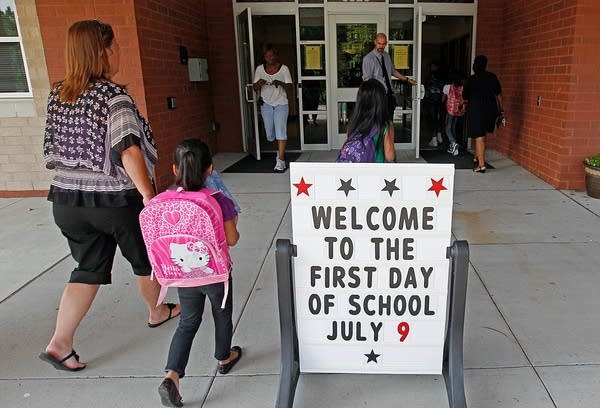Weighing the academic benefits, costs of year-round education
Go Deeper.
Create an account or log in to save stories.
Like this?
Thanks for liking this story! We have added it to a list of your favorite stories.

As students return to school each fall, teachers, parents and administrators all must confront the "summer slide" — the loss of knowledge and skills during the time away from the classroom.
Some public schools in Minnesota have already decided that year-round school is beneficial, but that option comes with a price tag. The typical U.S. student has a 180-day school year, which is shorter than the school year in most other countries, based on data from the Organisation for Economic Co-operation and Development.
Matthew Chingos, a fellow with Brookings Institution's Brown Center on Education Policy, proposed some ideas for handling budgeting concerns in a year-round school system in an article earlier this month. He said one solution would be larger class sizes:
Turn Up Your Support
MPR News helps you turn down the noise and build shared understanding. Turn up your support for this public resource and keep trusted journalism accessible to all.
In the U.S., the typical elementary student is enrolled in a class of 20 students with a teacher paid an average of about $56,000. Increasing the school year by 30 days (six out of about nine weeks of summer vacation), and paying teachers the same rate per day, would mean a salary increase of about $10,000. This could be accomplished — without any impact on overall spending on teacher compensation — by increasing class size by 3.3 students.
There's no doubt that teachers and parents prefer smaller classes, but what would the impact on student learning be of increasing class size by this modest amount in order to make a large increase in the number of days students spend in school? Research by Maria Fitzpatrick, David Grissmer, and Sarah Hastedt indicates that 30 more days in school would increase student achievement by about 0.15 standard deviations.
Chingos said research shows the three-student class-size increase would drop test scores by 0.05 standard deviations after one year, which would mean students would get an extra 20 days of learning with the longer school year.
We'll discuss the financial and educational elements at stake in year-round education.
LEARN MORE ABOUT YEAR-ROUND SCHOOLS:
• La Crosse year-round school model for Winona, Minnesota education
The year-round 45-15 school calendar ... does not increase the number of school days, but rather spreads out the learning days across the calendar year and enables remediation or enrichment during the 15 days off. (Winona Daily News)
• Research Spotlight on Year-Round Education
Most schools in the United States operate on the 10-month calendar that was established when America was still an agrarian country. But times have changed and many people propose doing away with this "outdated" system and moving to "year-round education." In this updated system, schools continue to operate 180 days per year, but they stretch out the 180 days over the entire year and take shorter breaks between each term.(National Education Association)
• Will longer school year help or hurt US students?
"Besides the outdoor opportunities for pent up youngsters, they say families already are beholden to the school calendar for three seasons out of four. Summer breaks, they say, are needed to provide an academic respite for students' overwrought minds, and to provide time with family and the flexibility to travel and study favorite subjects in more depth. They note that advocates of year-round school cannot point to any evidence that it brings appreciable academic benefits." (Associated Press)




